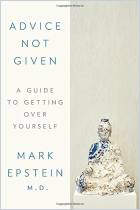加入 getAbstract 阅读摘要

加入 getAbstract 阅读摘要
BJ Gallagher and Franz Metcalf
Being Buddha at Work
108 Ancient Truths on Change, Stress, Money, and Success
Berrett-Koehler, 2012
看看什么内容?
Apply 2,500 years of Buddhist wisdom to solve your workplace stress and worry.
Recommendation
Thousands of years ago, the Buddha established a framework to help people achieve happiness and avoid suffering. For Buddhists, work is an organic, important part of life and an expression of a person’s highest values. Religious studies professor Franz Metcalf and business writer BJ Gallagher prove the modern relevance of Buddhist ideas, particularly in the workplace. Presented as question-and-answer discussions – as if students were quizzing a master teacher – this is a small book, but not a light read. It will give you plenty to think about, despite sometimes being a bit esoteric (consider the difficulty of condensing 2,500 years of thought into 176 pages). getAbstract finds that the readings have a cumulative, stress-relieving impact; they will give you a deeper understanding of Buddhist canons and their practical application in seeking balance.
Summary
About the Authors
Franz Metcalf, a religious studies professor at California State University, Los Angeles, also wrote What Would Buddha Do? BJ Gallagher, who produces corporate videos, also wrote several books, including the bestseller A Peacock in the Land of Penguins.



















Comment on this summary
Unfortunately Buddists in Myanamar and Sri Lanka are not walking their talk and follow the principle of Budda. Buddists monks hate speeches caused the genocide in these places.